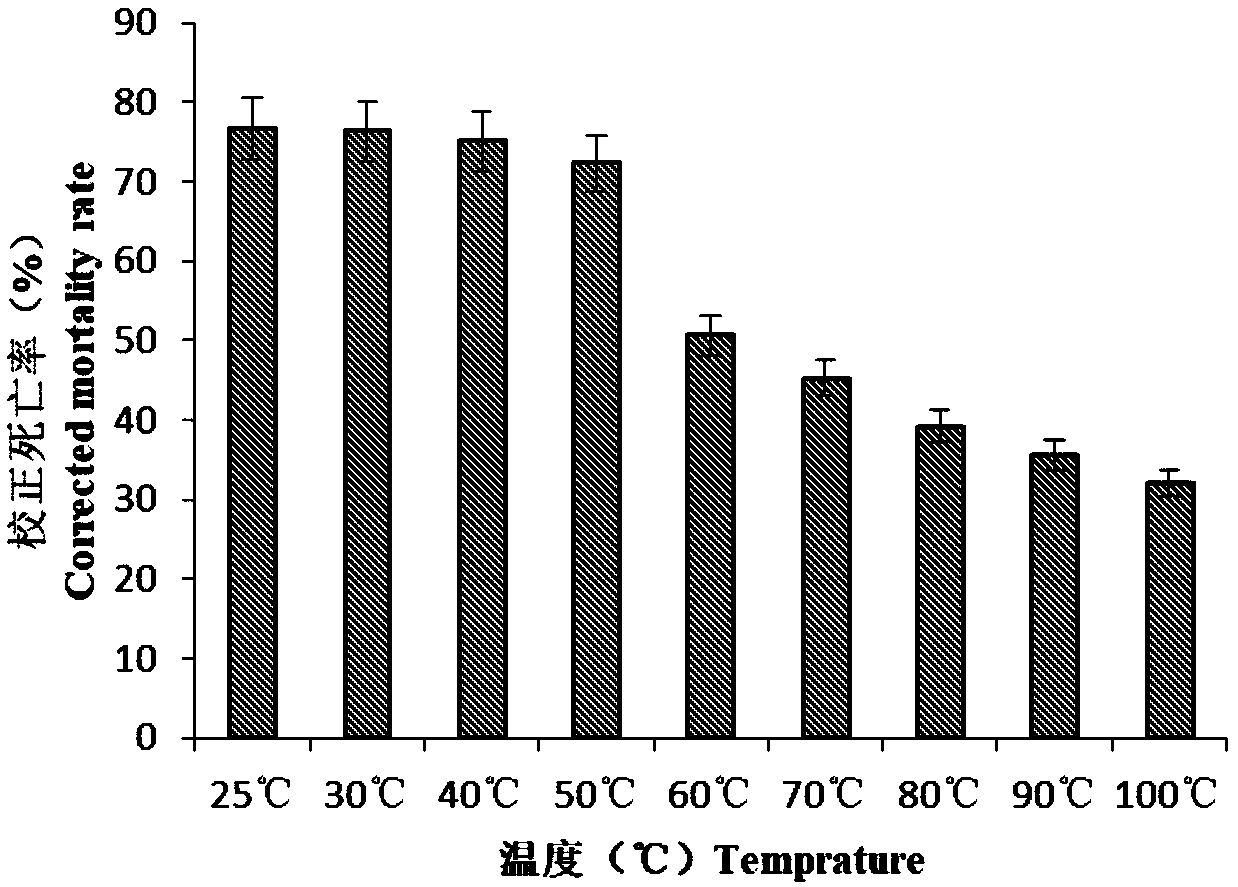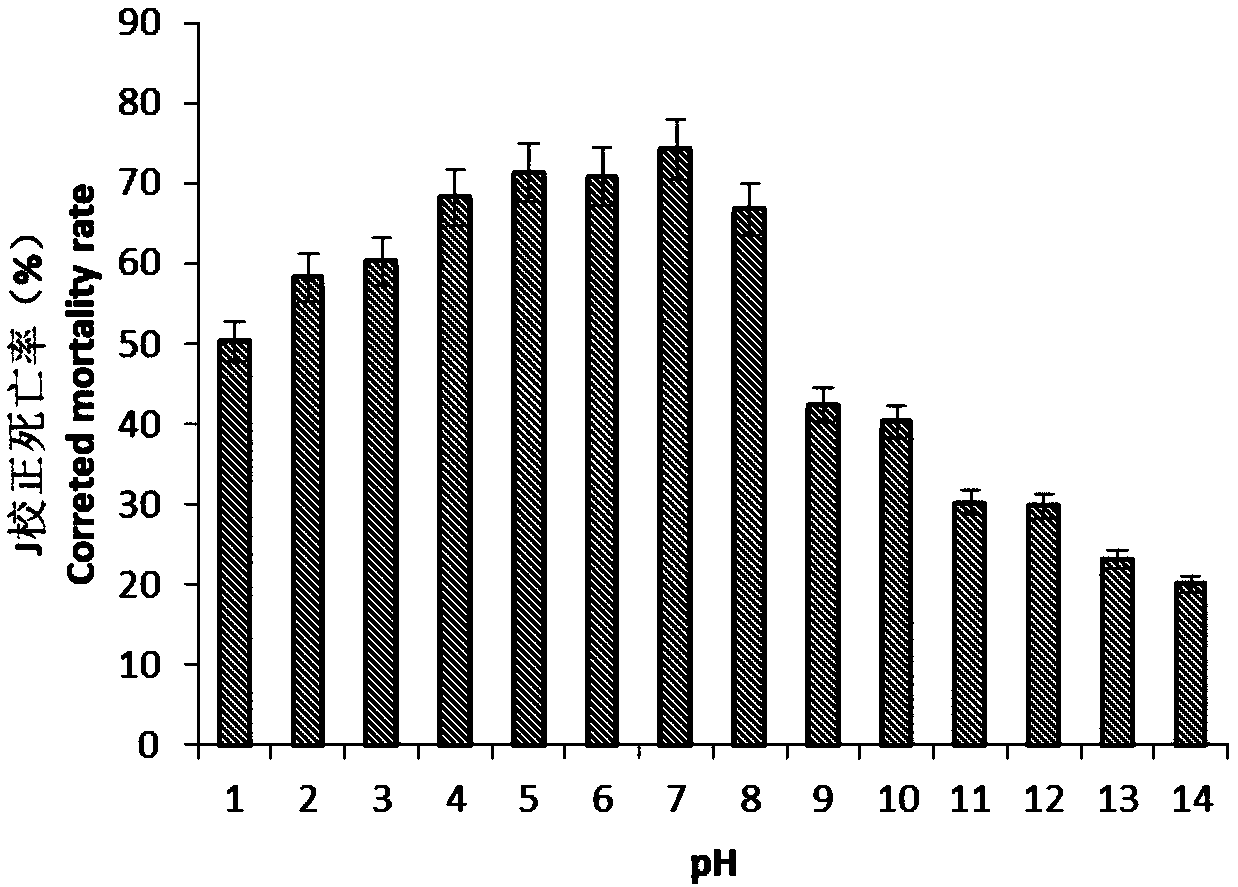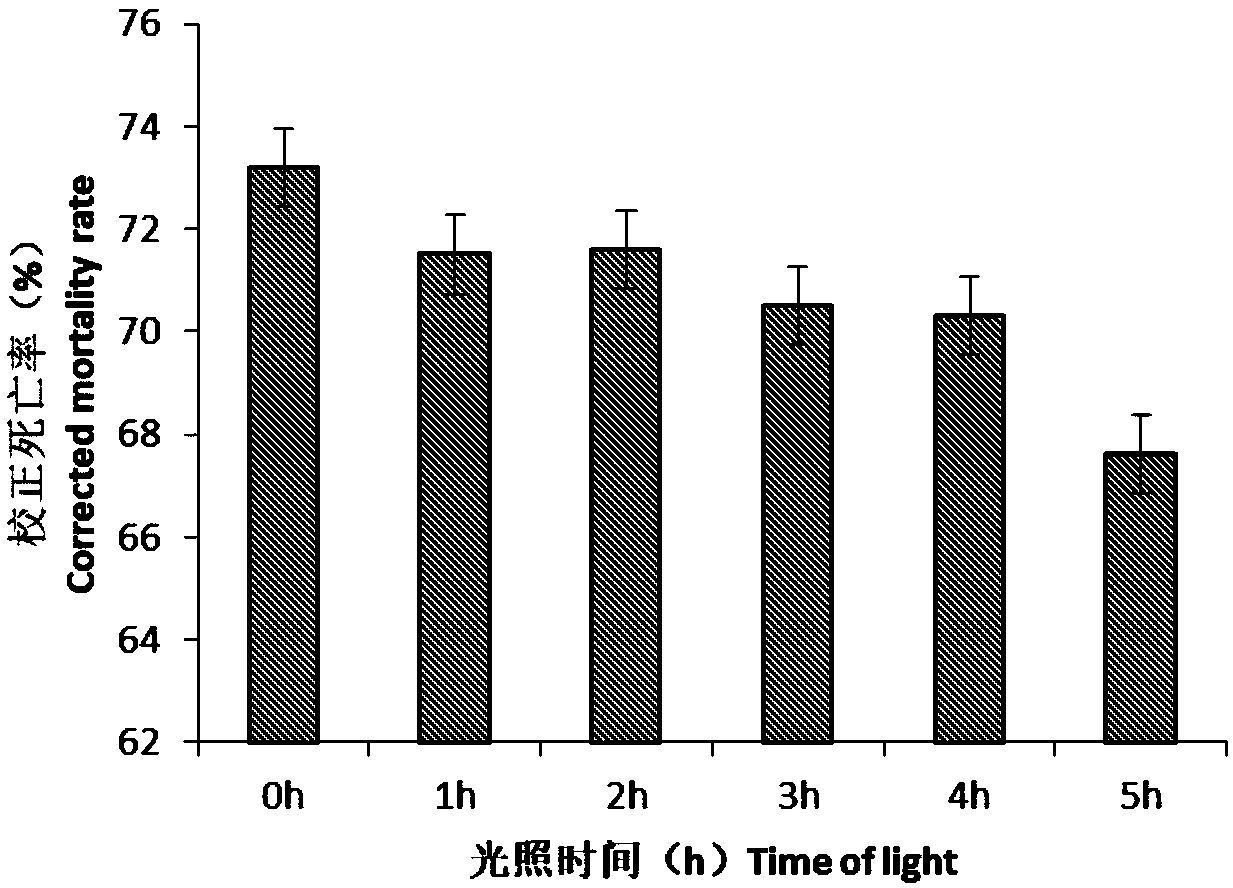Streptomycete and application thereof
A technology of Streptomyces and Streptomyces regis, applied in the application, bacteria, biocide and other directions, can solve the problems of poor stability and low insecticidal efficiency of antibiotics, and achieve high insecticidal activity, wide insecticidal spectrum, and genetic stability. Good results
- Summary
- Abstract
- Description
- Claims
- Application Information
AI Technical Summary
Problems solved by technology
Method used
Image
Examples
Embodiment 1
[0054] 1.2.1 Soil sample collection
[0055] After selecting a suitable location, use a small shovel to remove the topsoil, take about 30-50g of soil at a depth of 5-10cm, put it into a sterilized paper bag, number it, and indicate the collection location and date for the isolation of Streptomyces .
[0056] 1.2.2 Isolation and purification of Streptomyces
[0057] Streptomyces was isolated and purified by plate dilution separation method (Reference: Fang Zhongda. Plant Disease Research Methods [M] Beijing: China Agricultural Press, 2007, 243-250). In order to reduce the contamination of miscellaneous bacteria, especially bacteria, first bake 10g of the weighed soil at 120°C for 1h, then add 100mL of sterile water, shake for 30min, draw 1mL of the suspension, and dilute it with sterile water gradient, from 10 -3 、10 -4 and 10 -5 Pipette 0.1mL from the dilution tubes and add them to the Gaoshi No. 1 plate, spread evenly, and then place the culture dish upside down in a 28°...
Embodiment 2
[0068] 1.2.5 Determination of broad-spectrum insecticidal activity of Streptomyces LKY208 fermentation broth
[0069] Determination of insecticidal activity against calico moth, American white moth, diamondback moth, cabbage caterpillar and cabbage armyworm: use the leaf dipping method (the method is the same as 1.2.4).
[0070] Determination of insecticidal activity against corn borer: using feed poisoning method (references: Xu Shulan, Li Hui, Chen Qijin. Pathogenicity determination of beet armyworm nuclear polyhedrosis virus and the effect of group breeding on virus yield[J]. Changjiang Vegetables, 2010(18):10-12.). Evenly cut feed of a certain size (approximately the daily food intake of larvae), mix the fermentation liquid of the strain into the artificial feed after autoclaving (100 μ L / g), and feed the 2nd instar corn borer larvae, 20 larvae per treatment, Repeat 3 times. The rearing conditions were the same as above. After 48 hours, the survival or death of the test ...
Embodiment 3
[0075] 1.2.6 Determination of thermal stability
[0076] Take the same amount of fermentation liquid of the strain and treat it at 30°C, 40°C, 50°C, 60°C, 70°C, 80°C, 90°C and 100°C for 1 hour, take it out, cool it naturally, and use the method of soaking leaves to treat the 2-3 year old The insecticidal activity was detected on the larvae of C. chinensis, and the untreated fermentation broth (25°C) was used as the control.
PUM
| Property | Measurement | Unit |
|---|---|---|
| diameter | aaaaa | aaaaa |
Abstract
Description
Claims
Application Information
 Login to View More
Login to View More - R&D
- Intellectual Property
- Life Sciences
- Materials
- Tech Scout
- Unparalleled Data Quality
- Higher Quality Content
- 60% Fewer Hallucinations
Browse by: Latest US Patents, China's latest patents, Technical Efficacy Thesaurus, Application Domain, Technology Topic, Popular Technical Reports.
© 2025 PatSnap. All rights reserved.Legal|Privacy policy|Modern Slavery Act Transparency Statement|Sitemap|About US| Contact US: help@patsnap.com



